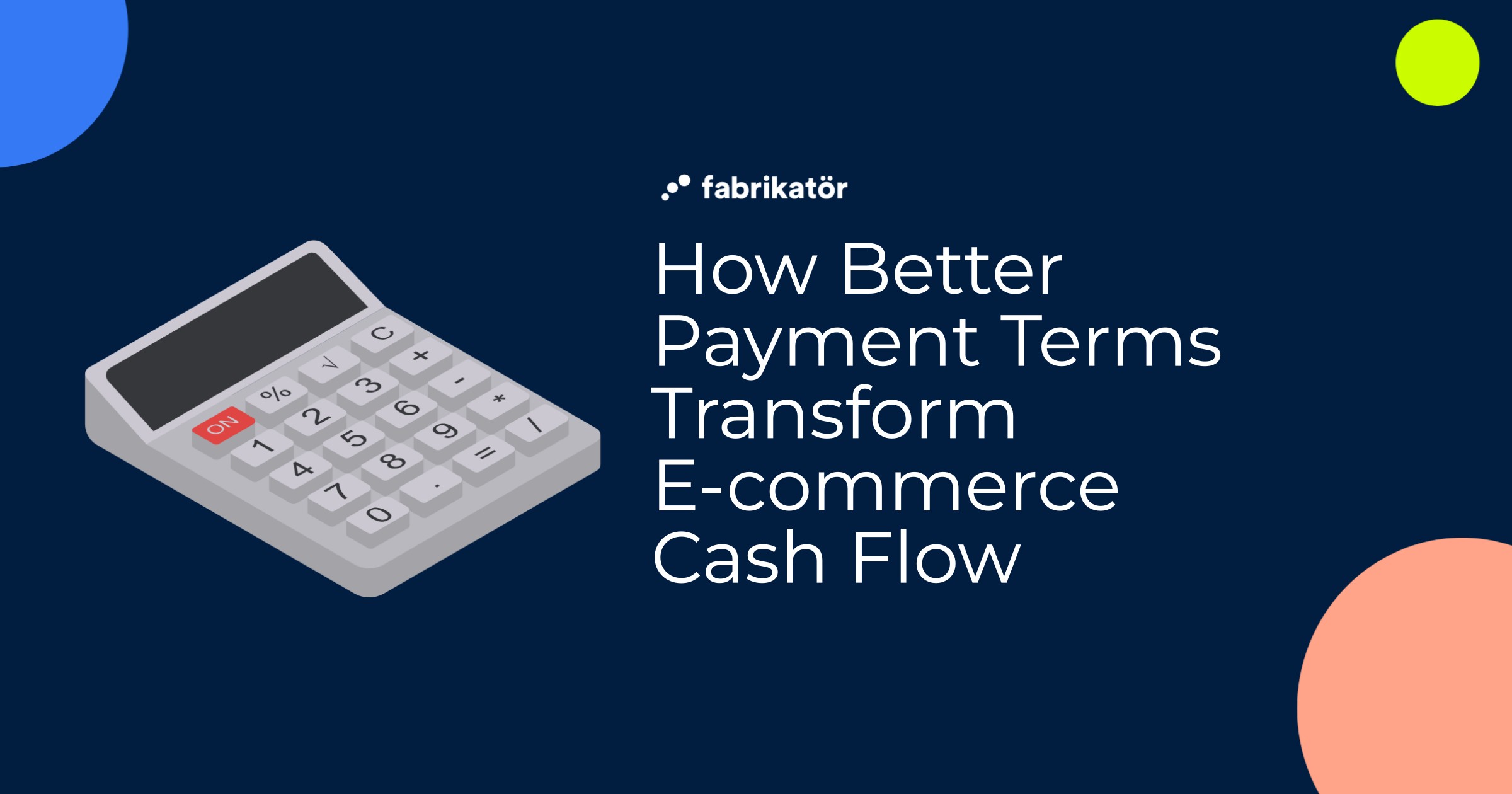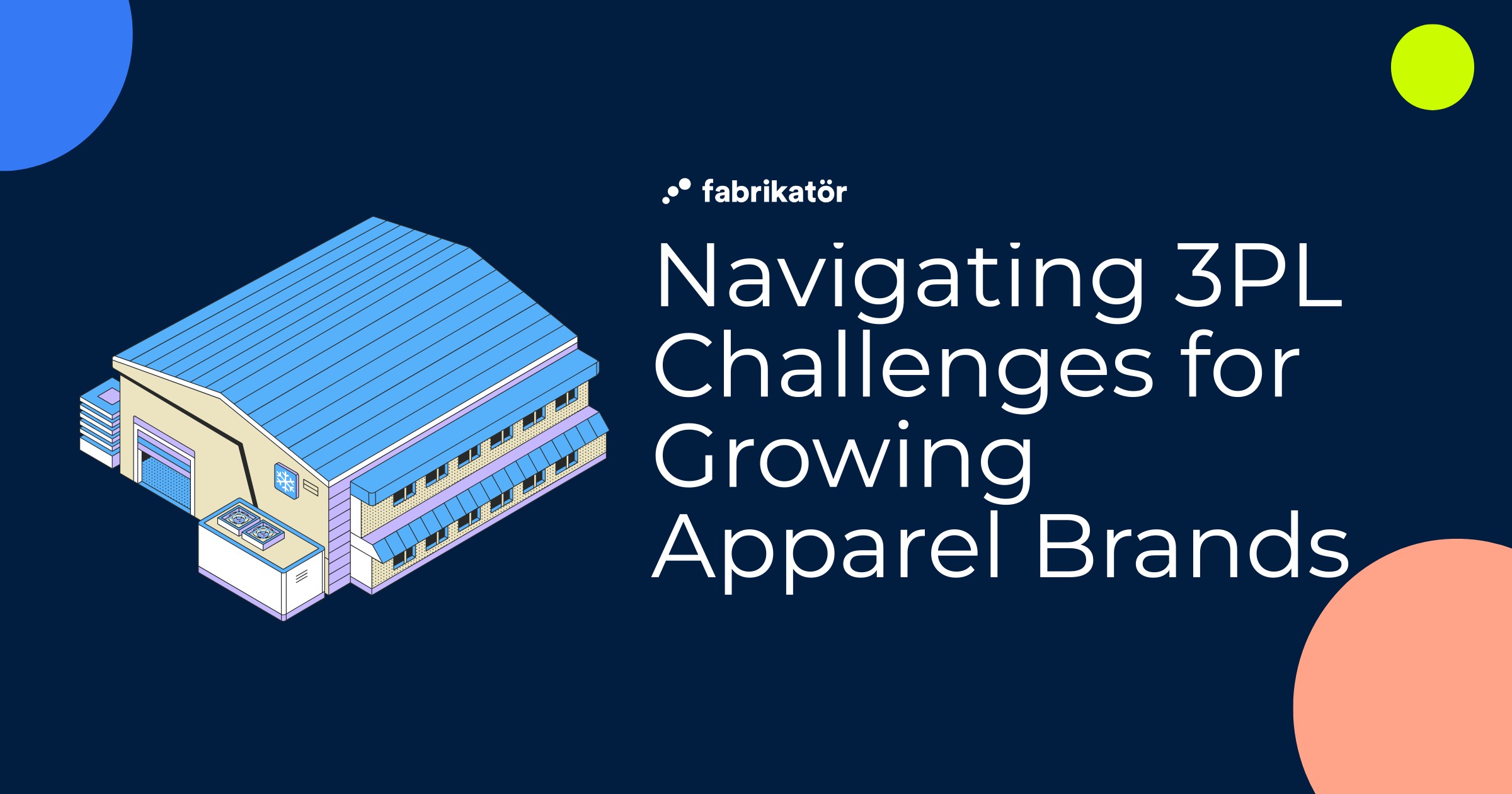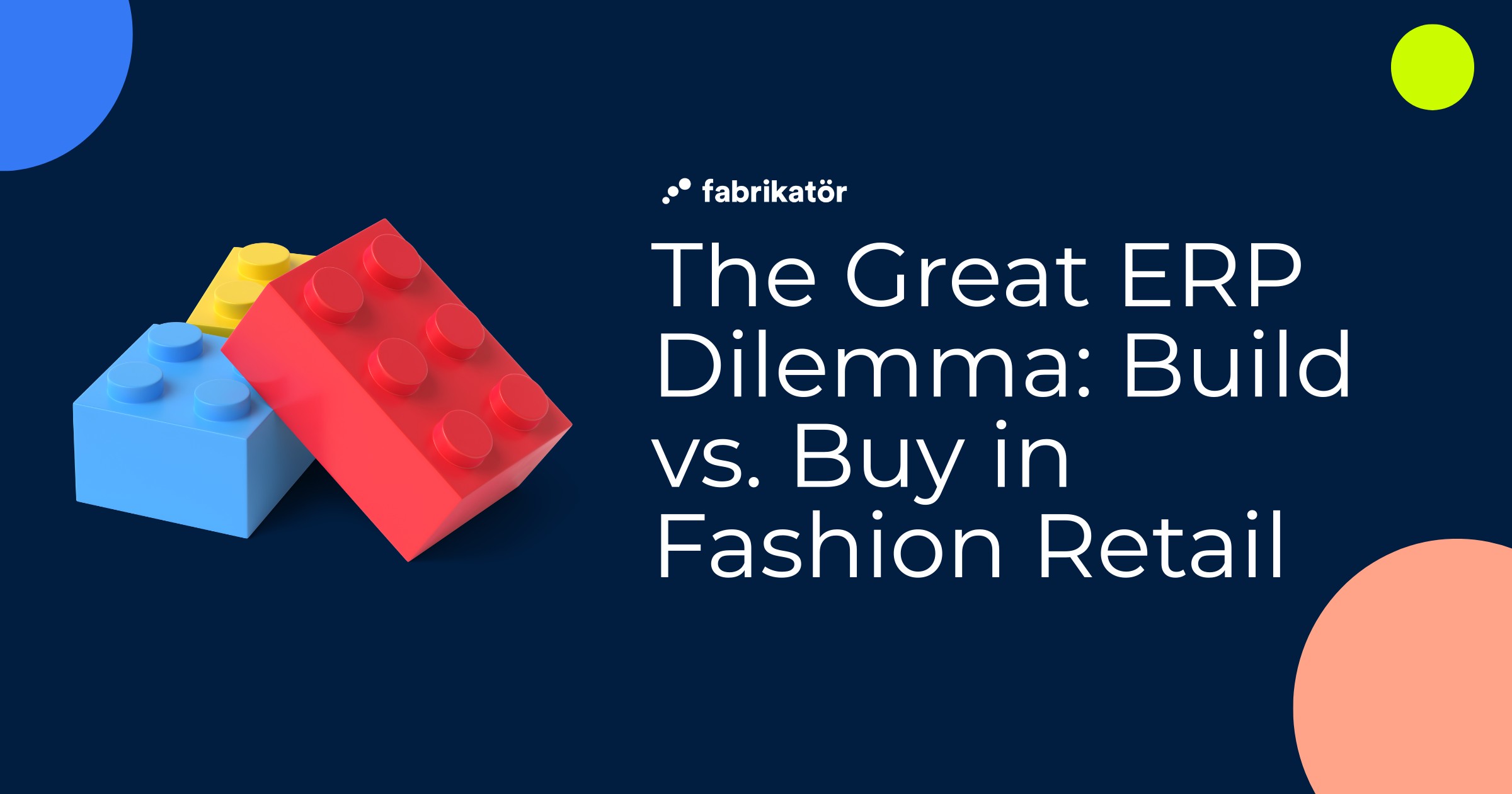Inventory Purchasing for eCommerce

Managing inventory may seem like a complex task, involving various steps such as purchasing, delivering, and restocking products. Among these, making sure inventory purchasing is done at the right time and in a planned manner is critical for running your eCommerce store efficiently. That’s why, this blog will dive into understanding inventory purchasing, and offer insights on how to improve it to keep your operations running smoothly.
What is Inventory Purchasing?
Inventory purchasing is the process of purchasing the right amount of stock to meet demand without over- or under-ordering. It involves making informed inventory purchases based on accurate sales forecasts, supplier terms, and business needs. Whether purchasing inventory on account (buy now, pay later) or upfront, a well-planned purchasing process ensures your store maintains enough stock to prevent shortages and avoid overstocking. By implementing the right strategies, eCommerce businesses can balance inventory, optimize holding costs, and eliminate excess stock or stockouts.
As eCommerce stores look for the best ways to manage their inventory, selecting the right method for inventory purchasing becomes essential. Let’s take a closer look at some common inventory purchasing methods.
Most Common Methods for Inventory Purchasing
Choosing the right inventory purchasing method is crucial for optimizing operations and managing costs effectively 💡. Here are some of the most common methods used by retailers today:

Choosing the right inventory purchasing method is crucial for optimizing operations and managing costs effectively. Here are some of the most common methods used by retailers today:
Just-in-Time (JIT) Inventory Purchasing
Just-in-time (JIT) inventory purchasing allows retailers to receive goods precisely when they are needed to fulfill customer orders. This approach minimizes on-hand inventory and storage costs. By placing smaller, more frequent orders, businesses can quickly adapt to changes in demand. However, the risk of stockout increases, particularly during supply chain disruptions.
Economic Order Quantity (EOQ) Inventory Purchasing
The Economic Order Quantity (EOQ) model focuses on ordering the ideal amount of stock to meet demand while keeping carrying costs low. Unlike JIT, EOQ necessitates maintaining a fixed inventory amount, making it more suitable for high-demand, stable products. Click here to learn how to identify the popularity of your products.
EOQ effectively reduces overall costs associated with the inventory purchasing process, delivering, and storing inventory. However, it operates under the assumption that demand and costs remain constant—a challenge for many eCommerce stores experiencing seasonal spikes, such as during Black Friday.
📌 Read Seasonal Demand Forecasting for Black Friday and Cyber Monday.
Reorder Point Method for Inventory Purchases
The Reorder Point (ROP) method involves monitoring stock levels to determine the optimal time to place new orders. When inventory falls below a specified threshold, it triggers a reorder and avoid stockouts. This method is particularly beneficial for brands aiming to maintain ideal inventory levels to avoid missed sales. However, accurate calculations and data analytics are crucial; misjudging the reorder point can result in out of stock or excess inventory, both damage your profits.
📌 Fabrikatör automates this process for you, ensuring that you receive timely alerts when it's time to reorder. This means less guesswork and more confidence in your purchasing decisions. You can focus on growing your eCommerce store while maintaining optimal inventory levels. Learn more in only 30 minutes.
Bulk Inventory Purchasing
With Bulk buying, you can make large inventory purchases at once, often in exchange for discounts from suppliers. With bulk orders, you can reduce per-unit costs and inventory expenses. While it can be a smart way to save money, it also carries the risk of overordering, potentially increasing storage costs if demand changes unexpectedly. Excess inventory can lead to dead stock, eating away at your savings and impacting cash flow.
Dropshipping for Inventory Purchases
With dropshipping, businesses sell products without directly handling inventory. Instead, they act as intermediaries, fulfilling orders via third-party suppliers. This model significantly reduces holding costs and simplifies scaling. However, drop shipping often comes with low profit margins and limited control over the supply chain. Delays or issues in product delivery can lead to lower customer satisfaction, as businesses depend entirely on external suppliers.
Order Pattern Method for Inventory Purchasing
The order pattern method involves making consistent, fixed-interval purchases, such as quarterly or biannually. This approach works well for products with steady, predictable demand, like non-seasonal items. However, it can be inefficient for brands facing fluctuating sales, leading to potential stock issues.
Control Rhythm Method for Inventory Purchasing
In contrast to fixed intervals, the control rhythm method requires periodic reviews and adjustments of stock levels (e.g., every six months). This allows businesses to place orders based on current demand trends, making it ideal for those with accurate demand forecasting. However, inconsistent forecasting can lead to stockouts between replenishments.
Each method offers unique advantages and challenges, depending on the nature of your products and business model.
For example, if you run a seasonal eCommerce store that sells holiday decorations, using a Just-in-Time (JIT) purchasing approach might be beneficial. This method allows you to receive enough stock just before peak demand periods like BFCM, minimizing storage costs and ensuring that you’re not left with excess inventory after the season ends. Conversely, if you manage a store with consistent demand, like a daily essentials retailer, adopting the Economic Order Quantity (EOQ) method could help you maintain stable inventory levels while keeping costs low.
Now that we've explored the most common methods for inventory purchasing, it's essential to focus on how to optimize these strategies to reduce costs and maintain optimal stock levels for your eCommerce business.
How to Optimize Inventory Purchasing: Reduce Costs & Optimize Stock Levels 💡

Optimizing inventory purchasing is essential for maintaining a profitable eCommerce business. Here are seven practical ways to optimize your inventory purchases:
1. Forecast Demand for Smart Inventory Purchases
Accurate demand forecasting 📊 is key to making informed inventory purchases. Use inventory management tools to predict demand based on historical sales data, ensuring you order just the right amount without overstocking.
With Fabrikatör's powerful analytics and advanced forecasting features, you can confidently plan your inventory purchases based on anticipated demand. By communicating early with suppliers and avoiding last-minute orders, you can achieve a faster and more profitable inventory purchasing process.
Especially on peak seasons like Black Friday, you can forecast and plan inventory efficiently with Fabrikatör. You can predict exactly how much revenue you’ll generate, which products will be in demand, and how much inventory you'll need to order—not just for the next purchase order (PO), but for the upcoming 3-4 POs. You can also apply growth rates to past campaign data easily to see what the upcoming season looks like.
2. Leverage Volume Discounts for Inventory Purchases
For consistently high-performing products, bulk purchasing can be a useful strategy. Securing volume discounts lowers your per-unit cost, but ensure that demand aligns with your inventory to avoid excess stock.
3. Consider Holding Costs in Your Purchasing Process
Holding inventory is costly, typically constitutes the 20-30% of overall inventory expenses. By planning your purchases carefully and considering carrying costs, you can minimize expenses. Methods like JIT or EOQ both help manage these costs and keep stock levels balanced.
4. Know Supplier MOQs to Optimize Inventory Purchasing
Minimum Order Quantity (MOQ) refers to the smallest number of units suppliers require for a purchase. Understanding and aligning with your suppliers’ MOQs is crucial to avoid excess stock. If MOQs are too high, you can reach out your suppliers with more flexible options.
5. Track Inventory in Real-Time for Informed Purchases
Real-time inventory management empowers data-driven purchasing decisions. This helps you to align inventory purchasing with actual demand. With tools like Fabrikatör, you gain 24/7 inventory visibility, track stock levels real-time and avoid stockouts and over-purchasing.
6. Have a Contingency Plan for Your Inventory Purchases
Having a contingency plan is crucial for managing unexpected events, like supply chain disruptions. Accepting backorder allows you to keep generating revenue while waiting for restocks, which helps maintain cash flow and customer satisfaction.
With Fabrikatör, you can accept backorders when your store is out of stock, allowing customers to purchase items that will ship as soon as they’re available. This means you capture sales even during stockouts! Isn’t it great?
📌 Read more to learn how backorders are beneficial for your eCommerce store.
7. Create Quick Purchase Orders for Smooth Inventory Purchasing
Creating quick purchase orders 📝 is essential for efficient inventory purchasing. Automating your purchasing process saves time and reduces the risk of errors, ensuring that orders reach suppliers promptly. This efficiency is vital for maintaining optimal stock levels.
Fabrikatör allows you to create quick and automated purchase orders, making inventory management a breeze. With its user-friendly interface, you can easily generate purchase orders based on real-time inventory levels and demand forecasts. This feature streamlines the purchasing process, allowing you to place orders with just a few clicks, ensuring that your suppliers receive your requests without unnecessary delays.
Can You Use Excel for Efficient Inventory Purchasing? 🧐
How much time do you spend manually creating purchase orders in Excel? With so many inventory management apps available, relying on Excel can be extremely time-consuming!
If you’re still using Excel for purchase orders and feel comfortable, you may be at the early stages of your eCommerce journey or managing a relatively small inventory. However, as your business grows, you’ll likely encounter the limitations of Excel and the complexities of handling larger volumes of orders and inventory. Here’s why Excel might not be the best solution for your expanding eCommerce store’s POs:
👉 Excel is Error-Prone
Relying on manual data entry increases the risk of errors, with studies showing that up to 90% of Excel files contain misleading data. Picture managing your inventory purchases in Excel and, before your morning coffee ☕, making mistakes while updating quantities, leading to incorrect orders and unnecessary costs.
👉 Excel Lacks Functionality
Unlike dedicated inventory management systems, Excel doesn't automate rules like Minimum Order Quantity (MOQ) or batch sizes. This lack of functionality can complicate your purchasing inventory process, causing delays and inefficiencies. For example, managing POs in Excel often requires ongoing adjustments, increasing the chances of stockouts and lost sales.
👉 Excel is Time-Consuming
The manual data entry and processing associated with Excel can eat up hours each day. As an eCommerce store owner, this time could be better spent optimizing your purchasing strategy rather than getting bogged down in spreadsheets.
All these factors suggest that Excel may not be the ultimate solution for managing purchase orders and inventory purchasing process. The best way to manage your purchase orders is through an inventory management app that seamlessly connects with your eCommerce platform. Why? Because an effective app supports every feature in inventory operations, offering a faster, more efficient assistant. I can hear you asking, “Which app is it?” Of course, it’s Fabrikör!
Create Purchase Orders with Fabrikatör and Optimize Inventory Purchasing for Your Store 🚀
Fabrikatör is designed to enhance your inventory purchasing process, ensuring that your eCommerce store runs smoothly and efficiently.
Fabrikatör’s inventory planning solution optimizes your inventory purchases and helps you avoid the pitfalls of manual order management and Excel limitations.

📦 Create purchase orders quickly, reducing the time spent on manual data entry.
📊 Gain actionable insights for better inventory decisions, ensuring you purchase the right quantities at the right times.
📝 Manage backorders effectively, allowing you to capture sales even when stock runs low.
🚨 Receive notifications for low stock levels, helping you replenish inventory before running out.
📈 Forecast future inventory needs, balancing stock levels to meet customer demand without over-purchasing.
🚚 Optimize purchasing routes to reduce costs and enhance delivery times, improving customer satisfaction!
Want to see how Fabrikatör can transform your inventory purchasing in just 30 minutes? Learn more with our experts and discover the difference!










